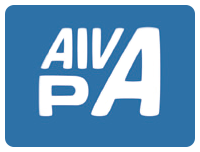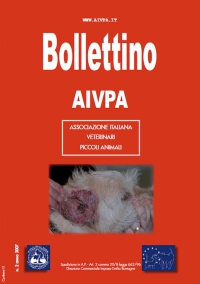L'innervazione pre- e post- natale delle vie urinarie distali nella specie canina
Ipotesi neurologiche alla base dell'instaurarsi del riflesso di minzione integrato
Authors
Arrighi S., Bosi G.
Dipartimento di Scienze e Tecnologie Veterinarie per la Sicurezza Alimentare, Laboratorio di Anatomia, Facoltà di Medicina Veterinaria, Università degli Studi di Milano
Ternullo M.
Medico Veterinario, Milano
Groppetti D., Cremonesi F.
Dipartimento di Scienze Cliniche Veterinarie, Facoltà di Medicina Veterinaria, Università degli Studi di Milano
Summary
This study was aimed to characterize the autonomic innervation of adult canine bladder and urethra as well as to depict its development during foetal growth. The pattern of cholinergic and adrenergic innervation of the lower urinary tract in adult dogs have been pointed out in details, but little is known about the nitrergic and peptidergic components, which might modulate the embranchments of the main innervation. In the dog, no data exist about the development of the innervation during ontogenesis, and reports are only sporadic on this matter in men and rats. Immunohistochemical studies were performed on bladder and urethra from 4 adult dogs of both sexes and 10 foetal specimens, with a crown-rump length from 53 to 155 mm (presumptive 38 days of gestation to term). On deparaffinized sections a panel of antisera was applied, including: PGP 9.5 to describe the general intramural innervation, ChAT and TH for the cholinergic and nor-adrenergic components, NOS1, CGRP, SP, NPY, VIP, SOM, GAL, 5-HT to investigate the possible nitrergic, peptidergic and aminergic ones.
Results obtained on adult bladder and urethra show a rich cholinergic ChAT-positive innervation, a moderate number of adrenergic TH-positive nerves and a small number of nitrergic nNOS-positive ones. Either bladder or urethra receive, distributed throughout the muscle layers, many nerve fibres containing peptides as: CGRP-, SP-, NPY, VIP. Strong to weak ChAT-, CGRP- SP- and NPY-immunoreactivity was detected in the neuronal bodies of intramural ganglia, in peripheral nerve bundles and around blood vessels all over the low urinary tract. 5-HT-immunoreactive endocrine cells are present in the urethral epithelium. Early foetal organs are only supplied by cholinergic nerve fibres, while at birth some nitrergic and peptidergic components, represented by scarse NO-, CGRP- and SP-containing fibres, become evident. In conclusion, it can be guessed that sensory mediators such as CGRP and SP increase in post-natal ages while other neuropeptides, as NPY and VIP, appear only after birth, once the urinary reflex consolidates.
Keywords
dog lower urinary tracts, ontogenesis, autonomic innervation, immunohistochemistry


